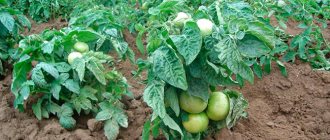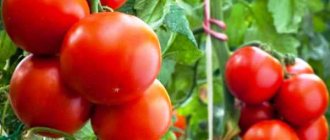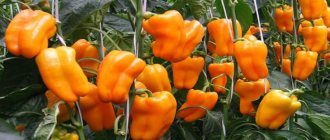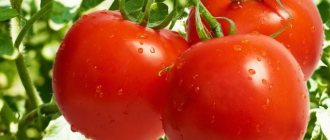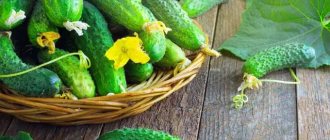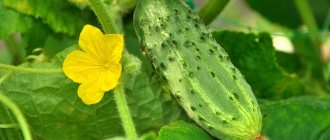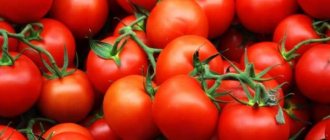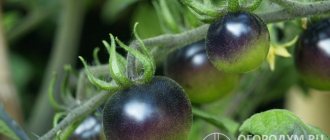The best and early varieties of cucumbers for greenhouses: photos and characteristics
Cucumbers have always been held in high esteem in our country. Almost all gardeners grow these vegetables. But what kind of greens to plant depends on personal preference. The fruits can be suitable for consumption immediately after picking fresh, or grown for subsequent pickling. Grow in open ground or indoors. And also have different ripening periods.
Varieties of cucumbers for growing in greenhouses: photos and descriptions
There are several dozen varieties of cucumbers for greenhouses. In addition, a large number of hybrids were bred.
Hybrid Hercules F1 is productive . Spindle-shaped fruits weighing 152 - 170 g. Considered late-ripening. From the moment of germination to the moment of fruit appearance, 62 days pass. Mixed flowering type. The ovaries are laid in bunches. The only disadvantage of Hercules F1 is that it requires pollination by bees. So in the greenhouse you will have to carry out artificial pollination manually.
Hybrid Emelya F1 - can be either pickled or salad. It was bred for growing under film. Ripens very quickly - in 39 - 43 days. The bush has an unlimited number of lashes and does not need pollination. Productivity is high. The fruits reach 13-15 cm. The weight of each of them is 120 - 150 g. It grows very well in heated greenhouses.
Annushka F1. Bee pollinated. Mid-season. The type of flowering is predominantly female. The leaves are medium in size and green in color. Cylindrical fruits with short stripes. Their length is 10 – 12 cm. Weight is 95 – 110 g. Ribbed and tuberculate. The tubercles are medium in size. Valued for disease resistance and stable yield.
The hybrid Dynamite F1 is universal . Feels good under film. Especially if you give him enough space. Zelentsy have a cylindrical shape, are not wide, weigh 100–120 g and are 12–14 cm long. Convenient because they do not require pollination.
The following hybrids are also good in quality:
| F1 athlete | Anyuta F1 | White Angel F1 |
| Fawn F1 | Vicenta F1 | Marta F1 |
| Solar | Crystal | Courage F1 |
The best varieties of cucumbers for winter glass greenhouses:
| Relay race | Home | Moscow greenhouse |
| Russian | Zarya | Willow |
| Manul | Surprise 66 | Marfinsky |
| Rykovsky | Regatta | Grenade |
| Spotresisting |
These varieties of cucumbers are capable of producing good yields and are unpretentious.
To be able to harvest an early harvest, it is necessary to use self-pollinating early varieties of cucumbers.
Among them:
| Muromsky 36 | Altai early 166 | Vyaznikovsky 37 |
| Satan | Othello | Bush |
| Elegant |
Varieties of cucumbers for pickling
Cucumbers were salted back in Tsarist times. And today, many people still prefer to grow green vegetables specifically for subsequent pickling. Suitable varieties of cucumbers for pickling: Muromsky, Nezhensky, Voronezhsky, Vyazemsky. However, it should be borne in mind that plantings require regular spraying, since they are not resistant to various diseases.
You can grow hybrids that have thin skins. Then it will be easier for the brine to penetrate the fruit. In this case, you should pay attention to:
| Finger | Vanguard | Cascade |
| Brigantine | fontanel | Asterix |
| Competitor | Pickling | Far Eastern 27 |
| Fabulous | Harvest 86 | Business Aquarius |
| Kharkovsky | Sight | Faithful friends |
| Altai | Connie | Favorite |
| Moment |
Salad varieties of cucumbers
If the fruit has a thick peel, then it is not suitable for pickling. But it is delicious fresh. Salad varieties of cucumbers are widely represented, as well as hybrids:
| Phoenix | Synthesis | Altai early |
| Epilogue | Adam | Darling |
| Unity | Vladivostoksky 155 | Saltan |
| Squadron | Pasamonte | Elegant |
| Rzhavsky local | Sagittarius | Resaster |
| Parade | Moravian gherkin | Neroshimy 40 |
| Ussuriysky 3 | Swag | Cruise |
| Stork | Serpentine | Photon |
| Dachny | Whale | Levina |
| Coastal | Libelle | Duet |
| Farmer | Northern | Blagodatny |
| Nightingale | baby crane | Druzhina Regia |
You can examine them in detail if you look at the photos of cucumber varieties.
Dutch varieties of cucumbers
Domestic gardeners often choose Dutch varieties of cucumbers. Among them there are several worthy of attention.
Pasadena F1. Parthenocarpic, mid-early. Short greens, cylindrical in shape, green or dark green in color without bitterness. Has good taste. The weight of each fruit is 66 – 92 g. It is valued for its stable yield. Zelentsy have high marketability.
Santana F1. It is valued for its resistance to various diseases, for stable yields and for a long fruiting period. The fruits are medium-sized, cylindrical without bitterness. Green or dark green in color and with longitudinal stripes. The weight of one fruit is 50 – 88 g. Along with Pasadena, F1 is tasty both fresh and salted. Bee-pollinated, mid-late.
Ceres F1. Grown in winter greenhouses. Parthenocarpic. The fruiting period begins 40 days after emergence. Zelentsy have an elongated cylindrical shape. Dark green, medium ribbing, smooth. Weighing up to 300 g. Length up to 33 cm. They have good taste. Used for making salads.
Cucumber variety Zozulya
Its fruits have good taste. The length of the greens is up to 23 cm. The shape is cylindrical, the surface is slightly tuberous. The base is smooth. In cross section, the green leaf is rounded and triangular. The leaves are green in color, their shape is rounded-pentagonal, the leaf size is medium. Climbing is weak. The ovary is cylindrical in shape. The pubescence is sparse, complex, white.
The main advantages include early and vigorous fruiting. It is best to grow in film greenhouses. About 48 days pass from the emergence of seedlings to the moment of fruiting. Parthenocarpic, but, nevertheless, it is advisable to pollinate in the first month of fruiting.
It should be taken into account that the Zozulya cucumber variety is susceptible to white and root rot.
udec.ru
Self-pollinating
An important role when choosing cucumber seeds for a greenhouse is played by their ability to self-pollinate or its absence altogether. Since bees will do all the necessary “work” when planting in open ground, they will not be able to do this in a greenhouse.
Parthenocarpic varieties are the most optimal varieties for growing cucumbers indoors, since they have the stamen and pistil in one flower. These species grow well in winter greenhouses. A distinctive feature of parthenocarpic varieties is seedless greens.
The absence of problems with pollination greatly simplifies caring for them, leaving the gardener with the usual actions - watering, loosening and fertilizing.
Choosing varieties of cucumbers for greenhouses
How to choose the right cucumbers for greenhouses?
Breeders recommend planting new varieties of cucumbers together with proven old ones, which leads to higher yields of both types.
For growing cucumbers in greenhouses, their variety and method of pollination are of great importance.
Self-pollinating varieties contain both female and male characteristics, so they can pollinate on their own. The best varieties of cucumbers for greenhouses:
- Amur.
- Elegant.
- Dynamite.
- Ginga.
- Hermann.
- Zozulya.
- Orpheus.
- Muromsky.
- Competitor.
- Dawn.
- Zyatek.
- Emelya.
- Surprise.
- Cheetah.
- Moscow greenhouse.
How to choose the appropriate variety of greenhouse cucumbers for cooking?
When choosing among a variety of cultures, we first of all think about how we will use them in the future. Depending on this, you need to choose exactly the variety of cucumbers that suits you best. Here preference should be given to both appearance, shape and texture.
According to the degree of suitability for food, the following types of greenhouse cucumbers are distinguished:
- salad;
- canned (suitable for pickling and pickling);
- universal.
When purchasing cucumber seeds, the packaging always indicates in what form they are best consumed. For example, it is better to eat high-yielding greenhouse salad cucumbers fresh, which include:
- Anyuta.
- White angel.
- Athlete.
- Solar.
- Orlik.
- Courage.
- Masha.
- Vicenta.
- Hercules.
- Danila.
- Crystal.
- Makar.
- Cartoon.
- Fawn.
- Martha.
- Tsarsky.
Their pulp is more juicy and tasty, and the skin, on the contrary, is thicker. They are slightly larger in size than all the others and have lighter spikes on the surface.
For canning, pickling and pickling, it is necessary to choose cucumber varieties with thin skin and small sizes, then they will be more amenable to heat treatment and will be very tasty. For example, the best varieties of cucumbers for greenhouses are suitable for canning, pickling and pickling:
- Adam.
- Moscow dude.
- Gracious.
- Hector.
- Buran.
- Legend.
If you want to eat cucumbers fresh and can them, the best choice would be the universal type varieties. Their skin is of medium thickness and lends itself well to heat treatment, and they also taste very pleasant. For example, according to gardeners, the best greenhouse varieties of universal-type cucumbers are:
- Annushka.
- Trump card.
- Sunrise.
- Three tankers.
- Minion.
- Thumb Boy.
- Corporal.
- Moravian Gherkin.
- Gracious.
- Northerner.
When do greenhouse cucumbers ripen?
Greenhouse cucumbers can be enjoyed all year round.
To do this, you need to know which varieties ripen and at what time. Breeders involved in their cultivation and breeding distinguish 4 groups. Early ripening are excellent cucumbers that ripen very quickly, in just 40 - 42 days. The best ones:
- Emelya.
- Anyuta.
- Courage.
- Evita.
- Masha.
- Leandro.
Early ripening ones are one of the most favorite cucumber varieties among children. Their ripening period is 44 - 46 days. The most popular are:
- Showcase.
- Zozulya.
- Connie.
- Matilda.
- Marinda.
- Region.
- Claudia.
Mid-season - ideal for canning, pickling and pickling. Their ripening period is 47 - 50 days. The most popular among them are:
- Droplet.
- Nezhinsky.
- Santana.
- Brownie.
Late-ripening - ripen in 50 days and are also intended for all types of canning and fermentation.
For greenhouses, you should choose special, most suitable varieties of cucumbers. Due to different microclimates in the greenhouse, as well as changes in humidity, cucumbers may develop diseases. The most common among them are powdery mildew, gray or white rot.
New varieties are the most resistant to diseases and are excellently suited to greenhouse conditions. They are distinguished by their high yield and are unpretentious in cultivation.
Modern breeders recommend choosing exclusively climbing varieties and not bush varieties for planting in a greenhouse. This is due to the fact that cucumber vines are more convenient to form and tie in a greenhouse; moreover, they take up less space and let in more sunlight.
Cucumbers are heat-loving plants that grow well in warm greenhouses with moderate humidity. Caring for them does not require much effort, especially if your greenhouses are equipped with drip irrigation. They need to be irrigated daily, but very carefully, because they have a weak root system located almost on the surface, and it is easy to damage.
During fruiting and flowering, cucumbers need additional organic nutrition. It is better to feed the plant in the evening.
nasotke.ru
Advantages of polycarbonate structures
Choosing the right greenhouse that will serve and generate stable income for many years should begin with determining what it will be used for. For example, structures for growing seedlings differ from those where vegetables can be planted, both in size and shape.
Most gardeners prefer structures with straight walls and a gable roof in which to place shelving or hang shelves. When choosing such a greenhouse, it is important not to cheap out and not to buy a cheap fake instead of durable and reliable polycarbonate, which can bring its owner a lot of trouble and extra costs.
An important role when purchasing a polycarbonate greenhouse is played by the material from which the structure is made. For example, if you grow cucumbers for sale, a galvanized steel frame will not be suitable for a polycarbonate greenhouse for Siberia. It is capable of bending, which is unacceptable in areas where large amounts of snow fall, although where there is high humidity or temperature changes, it will come in handy.
A PVC frame is an excellent option as it is durable, strong and unaffected by the environment, but it must be carefully secured. Light weight makes such a structure unstable in strong winds.
The most expensive, but also the most reliable is a frame made of high-strength aluminum, but no matter which polycarbonate greenhouse summer residents choose, they are all excellent for growing cucumbers, since it is easy to create any microclimate in them.
For those who prefer to entrust part of the work to automation, there are special devices that open and close windows taking into account the outside air temperature.
List of the most productive cucumber varieties
Every gardener is puzzled by the question of how to grow a good harvest of cucumbers. Today there are a very large number of hybrids and varieties. They differ in ripening period, growth pattern, taste characteristics and fruit size. However, a guaranteed high yield will only be achieved through a competent, correct choice. We will try to understand in this article which varieties of cucumbers are the most productive and popular among amateur vegetable growers and farms.
Greenhouse varieties
For cultivation in greenhouses, as a rule, F1 hybrids are used, less often specially bred for this variety. They have compact bushes with short side branches and do not need pinching. At the same time, the most common question, which cucumbers are the most productive, disappears by itself, since hybrid varieties are characterized by high fruiting and resistance to many diseases.
In a greenhouse, the zoning of plants is not so important, however, for cultivation in regions such as the Moscow region, Siberia or the Urals, it is worth choosing cold-resistant plants that consistently bear fruit even in low light conditions. It is also preferable to choose parthenocarpic or self-pollinating varieties. High-yielding varieties of cucumbers pollinated by bees require additional care during flowering, otherwise the flowers will fall off without forming ovaries. To do this, either provide insects with free access to the plants, or, if the size of the greenhouse allows, place bumblebee evidence.
Let's consider the well-proven and most productive varieties of cucumbers for greenhouse conditions.
Zozulya F1
Parthenocarpic, early ripening hybrid. The first fruiting begins just 42-48 days after planting. Climbing bushes are weak. The leaves are bright green, pentagonal, round in shape, medium in size. Ovaries with a slightly tuberous surface, cylindrical in shape. Greenery with a smooth base, sparse, white pubescence. One of the most productive cucumbers among hybrids. Flowers with a predominance of female type. The weight of the fruit reaches 250-320 g, with good taste characteristics. Fruiting is friendly and abundant. It has an average degree of susceptibility to root and white rot, and is resistant to fungal diseases, cucumber mosaic virus and olive spot. Cucumber is versatile in processing, used for salads and pickling.
Herman F1
It is also one of the most productive cucumbers. Parthenocarpic hybrid, super early ripening, after germination, fruiting begins within 42-45 days. The bushes are vigorous, but the climbing habit is weak. The fruits are medium-sized, weighing up to 125-180 g, 11-12 cm long, not prone to over-ripening and do not taste bitter in hot summers, dark, green in color with sparse white pubescence, elongated, cylindrical in shape, dense, crunchy, large-tubercular. 4-6 fruits are formed in one node. They are versatile in processing - well suited for marinade or pickling, and since bitterness is completely eliminated for this hybrid, German is the best choice for salads. It is highly resistant to diseases such as cladosporiosis, downy mildew, and mosaic virus.
Courage F1
A self-pollinating hybrid with a predominant number of female flowers, which makes it one of the popular and most productive cucumber varieties. The early ripening growing season from germination to first fruiting is 52-55 days. Plants are vigorous, climbing average. Up to 4-7 ovaries can form in one node. The fruits are medium-sized, weighing 130-170 g, 12-16 cm long, elongated, often tuberculate, green in color with lighter stripes and white spines, not prone to over-ripening. With high taste characteristics, the grains are small, there is no bitterness. Resistant to major fungal diseases. Although this hybrid is suitable for growing not only in a greenhouse, but also in open ground, in the second case the yield of cucumbers is much lower.
Masha F1
Hybrid of gherkin type, parthenocarpic with super early ripening. It has flowers of only the female type. The yield of cucumbers is very high. The number of lashes is average, the ovaries are formed in bunches. The fruits are small, up to 9-11 cm long. Dense, crispy, sweeter, without bitterness. The best option for marinade and salting. Resistant to diseases such as mosaic virus, powdery mildew, cladosporiosis.
For open ground
When choosing varieties for open ground, you should pay attention not only to which cucumbers are the most productive, but also their zoning, the need for light and heat conditions, and resistance to daily temperature fluctuations and diseases. Otherwise, even productive varieties of cucumbers will develop and bear fruit poorly, or drop flowers without forming ovaries.
Nezhinsky 12
It is one of the most productive cucumbers for suitable cultivation in open ground. Bee-pollinated, medium ripening period. The bush is tall, long-climbing, spreading. Resistant to many diseases, such as olive spot, bacteriosis, downy and powdery mildew, as well as pests such as gray mites. The fruits are medium-small, weighing 115-150 g, 13-14 cm long, elongated, ovoid, black-spiked, large-tubercular, the skin is not dense, does not turn yellow for a long time, the flesh is crisp. With high taste qualities. Ideal for pickling.
Requires fertile soil with high aeration. Planting density: no more than 3-4 plants per 1 square meter.
Delicious
Another popular, early ripening variety. The bushes are vigorous, powerful, with long vines and require shaping and pinching. The fruits are not prone to overripe and do not turn yellow, smooth, finely tuberculate, elongated, cylindrical in shape. Weighing 116-140 g, length 11-13 cm. The skin is not dense, dark green in color. The pulp is crispy, dense, with a high content of sugars, the seed chamber is small. Versatile in processing, well suited for pickling and salads. Fruiting is friendly and abundant. The variety is resistant to major fungal diseases. Tolerates short-term cold snaps well. Also requires fertile soil with good drainage. Seeds are planted in ridges to a depth of 1.7-2.5 cm at the end of May, then leaving no more than 3-4 plants per square meter.
Madam
High-yielding gherkin-type variety, super early ripening, growing season 43-48 days. The plant is bee-pollinated, with a predominance of female flowers, vigorous, with long vines. Requires the formation of a bush by pinching over 2-3 leaves. The arrangement of ovaries is bunched, up to 5-7 in one node. The fruits are short, no more than 10-13 cm long, weighing 70-85 g, oblong-cylindrical in shape, finely and often tuberculate, dark green in color with small light stripes. They do not turn yellow, do not outgrow, bitterness is excluded, white-thorned. The skin is thin and tender. Fruiting is abundant and friendly. Recommended for use in salads or lightly salted; used less frequently for preservation. Resistant to major diseases.
Pickling
Popular, early ripening (52-55 days), bee-pollinated variety. The plant is medium-sized, long-climbing, of mixed flowering type. Requires pinching. The fruits are medium and small, weighing 115-135 g, up to 12-14 cm long, not prone to overripe. In hot periods, with lack of moisture, they may become bitter. Coarsely tuberculate, cylindrical, elongated, green in color, with light stripes and black pubescence. Cucumber productivity is high, stable, fruiting is extended. Recommended for marinade and salting. The variety is resistant to short-term cold snaps and diseases such as downy mildew and mosaic virus. Tolerates daily temperature changes well.
Video “Cucumber varieties for greenhouses and open ground”
This video tells you which cucumbers are the most productive, how to choose a variety for your plot, what fertilizers are needed for stable fruiting.
plodovie.ru
Personal garden on the balcony
The gardener instinct manifests itself in many city dwellers. However, due to busy schedules and remote rural areas, turning your ideas into reality is not so easy. This problem can be solved very simply. To do this, you just need to choose the best varieties of cucumbers for the balcony. As a result, the crunchy sound of biting the greens will give all your neighbors an unprecedented appetite.
“Swallowtail F1” is almost a relative of large butterflies
Balconies, verandas, loggias, and greenhouses can be a great place for this gherkin species. The elongated stem produces short shoots that do not grow. Refined rough leaves look elegant in a home interior. Thanks to their excellent taste, cucumbers are suitable for both salads and pickles. From one node grows up to 10 greens, 7 or 11 cm long (60-100 g each). At the same time, the diameter of the fruit is no more than 3.5 cm. But not only Swallowtail has such characteristics. The following varieties of cucumbers get along well with this crop:
- "Biryusa";
- "Balcony";
- "Elegant";
- "Hummingbird";
- "Unfeminine local."
This description includes only 15 of the best varieties of cucumbers for the middle zone, but there are tens of thousands of them in the world. Yet, without the painstaking work of a gardener, any of them will simply wither away.
The best varieties of cucumbers - description with photos, reviews
It would seem that there is nothing difficult about growing cucumbers and reaping a good harvest. In fact, this is true, but in addition you need to approach this important matter with a certain amount of knowledge. In addition to the varieties of cucumbers, you should be aware of the rules regarding the care of this plant, as well as the diseases and problems that you may encounter during cultivation.
To grow beautiful crispy cucumbers, you need to decide where they will grow. This could be a greenhouse, greenhouse, open ground, or even a windowsill. It is also worth understanding when you need to get the harvest: perhaps you want to enjoy cucumbers in early June, or in July, or even completely, are ready to wait until August.
All cucumbers can be divided into early, middle and late, and those in turn are divided into cucumbers grown in greenhouses and greenhouses, cucumbers for open ground, and cucumbers for shaded areas.
Depending on where the freshly harvested crop will go, green fruits can be divided into 3 groups: for salads, for pickling, and universal. Of course, each variety has its own advantages, and any gardener must decide on the best option for himself, based on personal requirements and desires.
Growth time
To ensure that the process of growth and fruiting lasts as long as possible, you can sow seeds of different ripening periods. They are divided into varieties of cucumbers for polycarbonate greenhouses:
- Early - only 35-45 days pass from germination to the first fruits. These include species such as Masha F1 and Zozulya, which not only has a pleasant ripening period, but also the length of the greens, reaching 23 cm.
- Mid-early varieties ripen in 45-50 days and include varieties such as Marinda F1, Rafael F1 and Solnechny.
- Late species are suitable for pickling, and they produce a harvest after 56 days, for example, Athlete F1 and Hercules F1.
Growing cucumbers in a greenhouse is a profitable business and a pleasant hobby for those who choose to install a polycarbonate greenhouse on their property.
vse-temu.org
The best varieties of cucumbers for greenhouses
"Goosebumps F1"
Murashka F1
A fast-ripening variety that will take only 45 days to fully ripen. It is a self-pollinating, high-yielding hybrid from agro. The plant is of medium height, bunch-type flowering, the number and growth of lateral shoots is limited.
The fruits are large-tubercular, with small dark spikes on the surface. The length of one ripe cucumber can be 12 cm. There is no bitterness. The variety has excellent taste and has a universal application (can be used both fresh and for pickling).
It is resistant to powdery mildew and downy mildew. In addition to growing in greenhouses and greenhouses, it can be grown in open ground.
"Tom Thumb"
Thumb Boy
A fast-ripening variety of cucumbers that begins to bear fruit already on the 39th day after planting. Its flowers are functionally female.
It is resistant to many diseases inherent in this culture. Zelentsy do not grow large (less than 11 cm) and reach a weight of only 65 grams. This variety will appeal to gherkin lovers.
Most often used for preservation in whole form and pickling.
"Benefit F1"
Benefit F1
A fast-ripening variety that requires only 50 days to begin bearing fruit. Female type hybrid, self-pollinating. The cucumber grows medium-sized: from 100-120 grams and 12 cm in length. The surface is covered with small tubercles.
There is no bitterness in the fruits, so the area of application is universal. Most often used for pickling and preservation.
The variety is resistant to downy and powdery mildew, as well as root rot. Has good taste.
For pickling
Thin peel is the main requirement that housewives should make when choosing cucumbers for pickling and preservation. Therefore, greenhouse owners need to be careful when choosing seeds for sowing in a greenhouse.
Manufacturers must indicate on the packaging the variety the seeds belong to:
- White Angel is one of the most famous pickling varieties, characterized by high yield and excellent taste;
- Voronezh is a medium-late variety that produces a large harvest and meets all the requirements for good salting.
- The competitor is an early ripening variety with greens weighing 100-130 g, resistant to diseases.
It is good to grow such varieties for personal consumption, while for mass production it is better to choose cucumbers with universal properties.
The best varieties for open ground
"April F1"
April F1
A universal early-ripening hybrid that begins to produce its first fruits 55 days after the first shoots. It can be easily grown not only in garden beds, but also in small balcony boxes.
The plant of this variety is small and is capable of self-regulating the degree of branching. The fruits are cylindrical in shape and large in size. One fruit sometimes reaches 250 grams and grows up to 25 cm in length. Ripe cucumbers do not have bitterness, and the plant is not difficult to care for.
It is frost-resistant, which allows you to get good harvests in the open ground.
"Erofey"
Erofey
Mid-season bee-pollinated universal variety of cucumbers.
The plant itself is distinguished by its lush branching and tall growth. Zelenets is small - only 7 cm in length. The shape resembles an elongated egg, the surface is slightly tuberous.
Resistant to downy mildew.
"Masha F1"
Masha F1
Super-early ripening parthenocarpic hybrid of bunch-type flowering. It is distinguished by high yields and long fruiting.
From the moment the first entrances appear and fruiting begins, only 35-39 days pass. The fruits of this variety resemble gherkins with a coarsely tuberous surface. The shape is regular, cylindrical. There is no bitterness in the fruits; they are characterized by excellent taste.
Suitable for canning and fresh consumption. The variety is resistant to powdery mildew and mosaic virus. Easy to care for.
"Springhead F1"
Fontana F1
Bee-pollinated hybrid, medium ripening period. Endowed with resistance to several diseases.
The fruits are cylindrical in shape, with a finely lumpy surface. The spines are small and sparse. The fruits are not bitter, so they can be used for pickling and canning.
The length of one ripe greenery can reach 120 cm and weight 100 grams. This variety is one of the most popular for our climate.
Distinctive features of pickled cucumber
Pickling cucumbers have a rich green color. They have a dense skin with tubercles and pimples, at the top of which there are thorns.
You can determine whether cucumbers are suitable for pickling using the following criteria:
- On the package of seeds there is an inscription “for pickling, preservation” or “universal”.
- The skin is dense with black spines and large tubercles. The color of a cucumber depends on the variety and age of the fruit. For canning, it is recommended to choose dark green fruits. Overripe and yellow vegetables are not used for these purposes, as they have hard seeds and skin. Salting properties largely depend on the presence of thorns. If the thorns are black, it means the fruit has already given up excess moisture and the flesh has become dense and elastic. It can be used for pickling.
Advice! If the cucumbers have brown spines, it is better to wait 12-24 hours for them to release excess moisture.
- The fruits should be 6-10 cm in length. They are easy to roll and look beautiful in jars.
- The skin is not thin, without bitterness. The pulp is dense and elastic. These varieties also include small hybrids - gherkins and pickles.
Fruits with thin skin will not crunch. It should be tight. Cucumbers that taste bitter are also not suitable. There should be no voids inside. There should be few seeds inside.
Important! An elastic tail indicates that the fruits are fresh and can be used for canning.
Universal varieties have excellent taste fresh and salted. Therefore, they are also suitable for pickling. These fruits have medium-density skin and pulp. However, they will be less crispy.
Before collecting cucumbers for preservation, they are watered with warm water in the evening, and they are collected early in the morning.
The best cucumber varieties for shaded areas
"Muromsky 36"
Muromsky 36
Due to the fact that this variety takes only 35 days to ripen its fruits, it can be considered early ripening. Most often, cucumbers are used for pickling.
The surface of the fruit is smooth, with small tubercles. The length reaches 8 cm. The variety is moderately sensitive to frost. The color of ripe fruits is light green, shaped like an egg.
A feature of this variety is the rapid yellowing of the fruits, so they need to be collected from the garden quite often.
"Moscow Nights"
Moscow Nights
A mid-season parthenocarpic hybrid, the bush of which produces tasty fruits suitable for pickling and for eating in salads. The flowers are functionally female, the branching is exuberant and spreading.
The fruit has a cylindrical shape, the surface is tuberculate, dark green, with light white pubescence. The weight of one ripe cucumber reaches 110 grams, and the length does not exceed 14 cm.
Endowed with resistance to cucumber mosaic virus, powdery mildew and cladosporiosis.
How to choose: dealing with diversity
The range of cucumber varieties is amazing; for preservation and other preparations, it is recommended to choose cucumbers that are adapted to the local climate and soil composition. Fruits used for pickling:
- with large tubercles and black spines;
- with dense pulp;
- with a small amount of seeds;
- with dark sweetish skin;
- without voids inside.
The length of the greens should not be more than 13–15 cm. Gherkins measuring 4 or 5 centimeters are pickled; for larger cucumbers, a brine is prepared from dill, mustard, and spices, resulting in a spicy, crispy snack that is impossible to refuse.
When preparing greens, the thorns break off, and pores form on the skin through which the solution penetrates into the pulp. Smooth fruits are very slippery, and cucumbers with tubercles are easy to place in a barrel.

